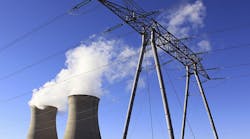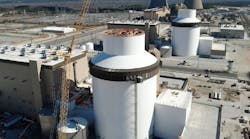In June 2014, the U.S. Environmental Protection Agency (EPA) released its proposed Clean Power Plan (CPP), designed to reduce carbon emissions from existing electric power plants. The proposed plan met with strong opposition, particularly from coal-producing states. In October of this year, the EPA published its final CPP rule that calls for a 32% reduction in greenhouse gas emissions below 2005 levels by 2030. Initial plans are due from the states by September 2016, although the EPA has indicated a willingness to grant two-year extensions.
Publication of the CPP also set off the expected legal and legislative challenges. A coalition of 24 states and a coal-mining company immediately sued, claiming that the EPA has gone beyond the authority granted by Congress. Other lawsuits are expected. In Congress, republican and coal-state democratic members are seeking to pass resolutions that could overturn the CPP rules. Additionally, state leaders in Oklahoma, Kentucky, Texas and Wisconsin have indicated that their states will not comply with the CPP. The battle over the CPP will be certainly be long and contentious.
In spite of all the heated rhetoric, several of the 24 states filing suit have already begun developing compliance plans. Many electric utilities are also moving toward compliance. Driven by CPP compliance, the EPA’s Mercury and Air Toxics Standards (MATS), plant age and cheap natural gas, many utilities are voluntarily retiring coal plants. AEP is a good example. In 2005, AEP’s coal capacity was at 75%, but today it is near 50%. Southern Company is another. It’s coal generation has dropped from 70% to 35% over the same time period. According to the Sierra Club, almost 42 GW of coal-fired generation has been retired across the nation since 2010, with 15 GW occurring so far this year.
All of these coal plant retirements are having an impact on U.S. carbon emissions. AEP reports that its carbon emissions have declined 15% over the last 10 years. And the New York advisory firm Rhodium Group estimates that 2015 carbon emission for the U.S. electric utility sectors will be below 1995 levels. Reuters also reports that among the leading industrialized democracies, the U.S. is leading the move away from coal.
So regulatory and market conditions are leading to old coal plants being retired early, and the U.S. is leading industrialized democracies in carbon-emission reductions. Everything is great, right? Perhaps not.
First, the CPP may prove financially challenging. In October, Fitch Ratings issued a press release stating that utilities in Kansas, Missouri, Nebraska, Tennessee and West Virginia will be the most challenged to preserve financial margins while meeting CPP goals. The managing director of Fitch’s public power group, Dennis Pidherny, said, “States with high electricity costs, sizable mandated carbon-reduction goals and high carbon-reduction costs remain the most challenged by the Clean Power Plan.” Lastly, Fitch believes “the EPA’s assumptions related to energy efficiency, renewable penetration and cost are aggressive” and “if their assumptions and the economics of gas-fired generation prove overly optimistic, compliance costs could soar.”
There are more concerns. Gas-fired plants are replacing most of the retiring coal plants. Since natural gas produces far less carbon emissions than coal, this is helping utilities comply with CPP goals. The problem is that historical natural gas prices have been highly volatile. As the share of natural gas-fired generation grows, the cost of electricity becomes more sensitive to any future natural gas price run-ups. Recently, natural gas prices have been low, but even a cursory examination of gas prices over the last 10 years reveals significant price excursions. Should we see such price excursions in the future, it could have a drastic impact upon the price of electricity. Not the best outcome for an industry facing ever-increasing competition.
Current low natural gas prices may be producing another unintended consequence. In competitive wholesale markets, nuclear plants are finding it difficult to compete against natural gas-fired generation. This, coupled with the advanced age of these facilities, has led to the retirement of several nuclear plants. More retirements are expected. As with their coal-fired base-load cousins, retired nuclear plants are being replaced mostly by gas-fired units, further compounding the previously mentioned price volatility problem.
There is another problem looming. If gas continues to replace zero-carbon nuclear power, it will have a negative impact on CPP goals. The think tank Third Way is concerned about more reactor closings. In a recent study, Third Way researchers found that “renewables growth has been strong but can’t keep up to replace the lost nuclear power” and “in the worst case, emissions would revert to their peak levels in 2005, basically eliminating a decade of progress in carbon reduction.”
While providing zero-carbon energy, nuclear power also reduces natural gas price risks and provides the grid with much-needed reliable energy production. I’ve said it before but it bears repeating: If the United States wants to be serious about carbon reduction, it also needs to be serious about nuclear energy.


